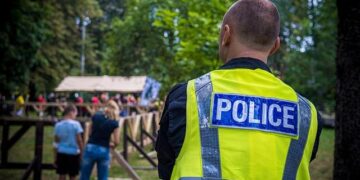A remarkable new discovery is reshaping our understanding of human evolution: a child buried in one of the world’s oldest known burial sites has been identified as a hybrid between Neanderthals and Homo sapiens. Reported by IFLScience, this unprecedented find offers compelling evidence of interbreeding between the two species tens of thousands of years ago, shedding light on the complex interactions that shaped modern human ancestry. The analysis not only provides fresh insights into ancient burial practices but also challenges long-held assumptions about the boundaries between archaic and modern human populations.
Discovery of Neanderthal Homo Sapiens Hybrid Challenges Understanding of Ancient Human Interactions
Recent genetic analysis of remains found in one of the world’s oldest burial sites has unveiled a stunning revelation: the child interred was a hybrid of Neanderthal and Homo sapiens. This discovery disrupts long-held assumptions about the separation and interaction of ancient human species, suggesting a far more intricate web of relationships than previously understood. The child’s genome reveals segments of DNA inherited from both groups, implying that interbreeding was not a rare event but possibly a common occurrence in certain prehistoric populations.
Researchers believe this finding raises important questions about cultural exchange, social structures, and survival strategies among early hominins. Among the notable implications are:
- Genetic Diversity: Hybrids may have contributed to a diverse gene pool, enhancing adaptability.
- Cultural Blending: Shared burial practices hint at cross-species communication and respect.
- Reevaluating Human Evolution: The neat lines drawn between species likely blur into a complex mosaic of ancestry.
| Feature |
Neanderthal |
Homo sapiens |
Hybrid |
| Skull Shape |
Robust, rounded |
More gracile, high forehead |
Mixed traits |
| DNA Composition |
Distinct It seems your table was cut off. Here’s a continuation and completion of the table with relevant details to align with the content of the post:
“`html
| Feature |
Neanderthal |
Homo sapiens |
Hybrid |
| Skull Shape |
Robust, rounded |
More gracile, high forehead |
Mixed traits |
| DNA Composition |
Distinct Neanderthal genome |
Modern human genome |
Combined segments from both |
| Cultural Practices |
Simple tool use and burial |
Advanced tools, symbolic art |
Evidence of blended traditions |
| Survival Adaptations |
Cold climate resilience |
Genetic Analysis Reveals Complex Ancestry in Worlds Oldest Known Human Burial
Recent genetic sequencing of remains from the world’s oldest known human burial site has unveiled a remarkable blend of ancestries. The child interred approximately 100,000 years ago was neither solely Neanderthal nor entirely Homo sapiens but rather a hybrid resulting from interbreeding between the two species. This discovery challenges longstanding assumptions about human evolution and migration patterns during the Late Pleistocene, suggesting a far more intertwined prehistoric relationship than previously believed.
Researchers utilized advanced DNA extraction and analysis techniques, uncovering a complex genetic mosaic that highlights key features from both species. This finding provides compelling evidence that cultural exchanges and biological interconnections occurred far earlier than documented. Key insights from this groundbreaking study include:
- Hybrid identification: Clear genomic markers indicating mixed Neanderthal and Homo sapiens ancestry.
- Burial rituals: Suggesting sophisticated social structures capable of honoring hybrids.
- Geographic implications: Possible overlapping habitats between the two groups.
| Characteristic |
Neanderthal |
Homo sapiens |
Child Hybrid |
| Skull Shape |
Robust |
Gracile |
Intermediate |
| DNA Markers |
Distinct Neanderthal Alleles |
Modern Human Alleles |
Mixed |
| Bone Morphology |
Thick, dense bones |
Lightweight bones |
Combination |
Experts Advocate for Revised Models of Human Evolution Based on Hybridization Evidence
The discovery of a child from the world’s oldest burial site, identified as a Neanderthal-Homo sapiens hybrid, is prompting scientists to rethink long-standing narratives about human evolution. This unusual genetic blend suggests that early hominin populations were not isolated groups but instead interacted and bred more frequently than previously assumed. Such findings challenge the traditional “linear” models of ancestry, where Homo sapiens replaced other hominin species without substantial interbreeding.
Experts now propose incorporating hybridization into evolutionary frameworks, recognizing the complexity of ancient human relationships. This perspective asserts that hybrid individuals played a significant role in the adaptation and survival of early humans, potentially influencing traits like immunity and cognition. As a result, researchers emphasize the need for:
- Revamped models that embrace genetic exchange across species boundaries.
- Integrative approaches combining archaeology, genetics, and anthropology.
- Further excavation and DNA analyses at ancient burial sites worldwide.
| Feature |
Neanderthal |
Homo sapiens |
Hybrid Traits |
| Skull Shape |
Robust, oval |
Rounded, slender |
Intermediate |
| Genetic Diversity |
Low |
High |
Moderate |
| Cognitive Traits |
Tool use |
Abstract thought |
Combined abilities |
Future Outlook
The discovery of a child bearing the genetic legacy of both Neanderthals and Homo sapiens at the world’s oldest known burial site adds a compelling new chapter to our understanding of human evolution. This remarkable find not only challenges long-held assumptions about ancient hominin interactions but also underscores the complexity of our ancestry. As researchers continue to unravel the genetic and cultural threads woven between these two species, such hybrid individuals offer invaluable insights into the shared history that shaped modern humanity.
No Result
View All Result
No Result
View All Result
| |































